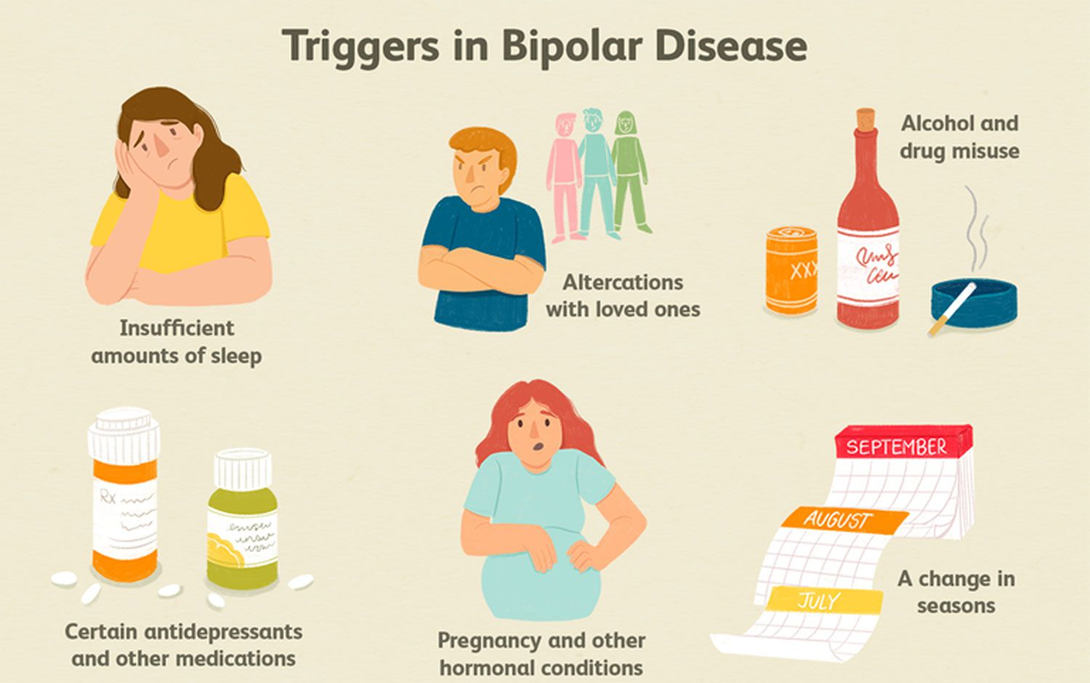A nurse is caring for a client who has bipolar disorder. Which of the following actions by the client should the nurse interpret as displaying manic behavior? Select all that apply.
Talking in rapid, continuous speech.
Interacting with others in a flirtatious way.
Dressing in black or grey clothing.
Sleeping for long periods of time.
Spending large sums of money.
Correct Answer : A,B,E
Choice A reason: Rapid, continuous speech is a common symptom of manic behavior, as individuals may feel an increased pressure to speak.
Choice B reason: Flirtatious interaction can be part of the increased sociability and decreased inhibition associated with mania.

Choice C reason: Dressing in black or grey clothing is not specifically indicative of manic behavior.
Choice D reason: Sleeping for long periods is more commonly associated with depressive episodes, not manic behavior.
Choice E reason: Spending large sums of money recklessly can be a sign of the impulsivity and poor judgment that accompany manic episodes.
Nursing Test Bank
Naxlex Comprehensive Predictor Exams
Related Questions
Correct Answer is ["A","D","E"]
Explanation
Choice A reason: Honoring commitments and punctuality are fundamental in building trust, especially with clients who may have trust issues due to paranoid personality disorder.
Choice B reason: Superficial social conversation may not be effective in fostering trust with a client who has paranoid personality disorder, as they may perceive it as insincere.
Choice C reason: Using humor can be misinterpreted and may not be appropriate when working with clients who have paranoid personality disorder, as they might suspect ulterior motives.
Choice D reason: Including the client in the development of their plan of care is crucial as it gives them a sense of control and involvement, which can foster trust.
Choice E reason: A formal businesslike approach can provide a sense of professionalism and boundaries, which can help in building trust with a client who has paranoid personality disorder.
Correct Answer is B
Explanation
Choice A reason:
Informed consent is a critical component of many medical treatments, including ECT. It involves the patient's understanding and agreement to the procedure after being fully informed of the risks, benefits, and alternatives. Cognitive deficits can impair a patient's ability to provide informed consent, but they do not automatically waive the requirement for such consent. In fact, additional safeguards are often put in place to protect the rights of individuals with cognitive impairments.
Choice B reason:
ECT is a medical procedure that requires informed consent due to the potential risks and side effects associated with it. If a client has cognitive deficits severe enough to impact their decision-making capacity, they may not be able to provide informed consent. In such cases, treatment options would need to be reconsidered, and alternative methods of obtaining consent, such as through a legal guardian or a court order, might be necessary.
Choice C reason:
While it is true that ECT is considered an effective treatment for severe depression and suicidality, the decision to use ECT should not be based solely on these criteria². The ability of the client to understand and consent to the treatment is also a crucial factor. Therefore, the extremity of the client's suicidal ideation alone does not make ECT automatically the appropriate option without considering the consent issue.
Choice D reason:
ECT is indeed an alternative treatment when antidepressant medications have been ineffective, especially in cases of severe depression and suicidality². However, the effectiveness of ECT does not negate the need for informed consent. The client's cognitive ability to provide consent remains a determining factor in the feasibility of ECT as a treatment option.
Whether you are a student looking to ace your exams or a practicing nurse seeking to enhance your expertise , our nursing education contents will empower you with the confidence and competence to make a difference in the lives of patients and become a respected leader in the healthcare field.
Visit Naxlex, invest in your future and unlock endless possibilities with our unparalleled nursing education contents today
Report Wrong Answer on the Current Question
Do you disagree with the answer? If yes, what is your expected answer? Explain.
Kindly be descriptive with the issue you are facing.
